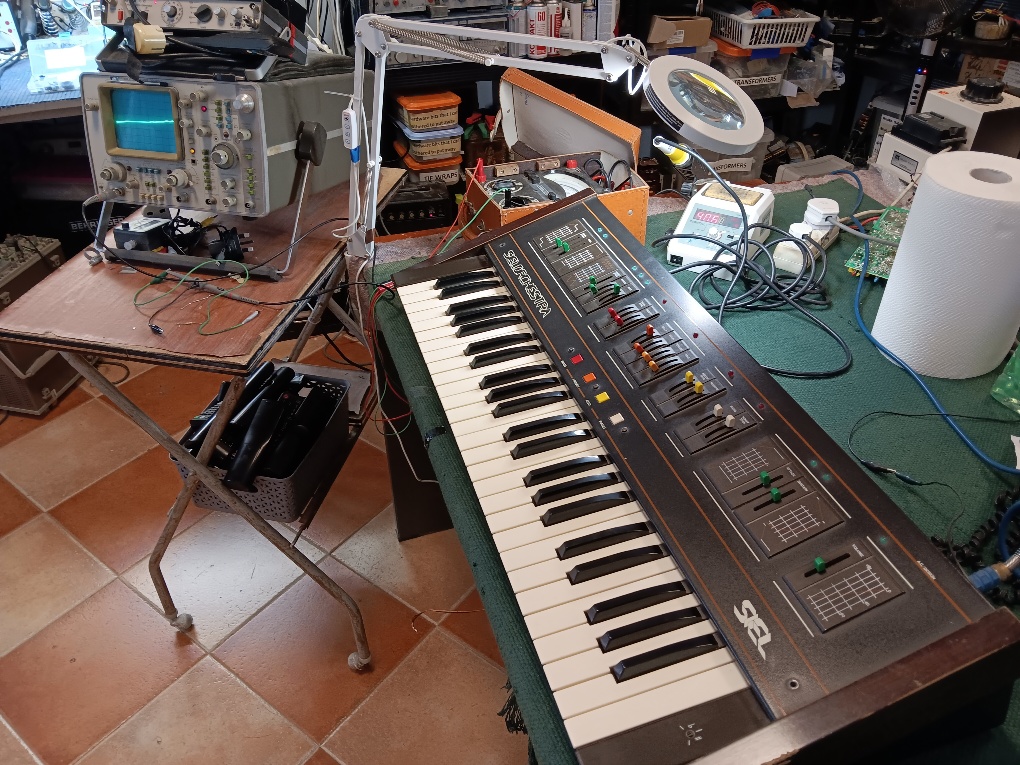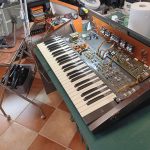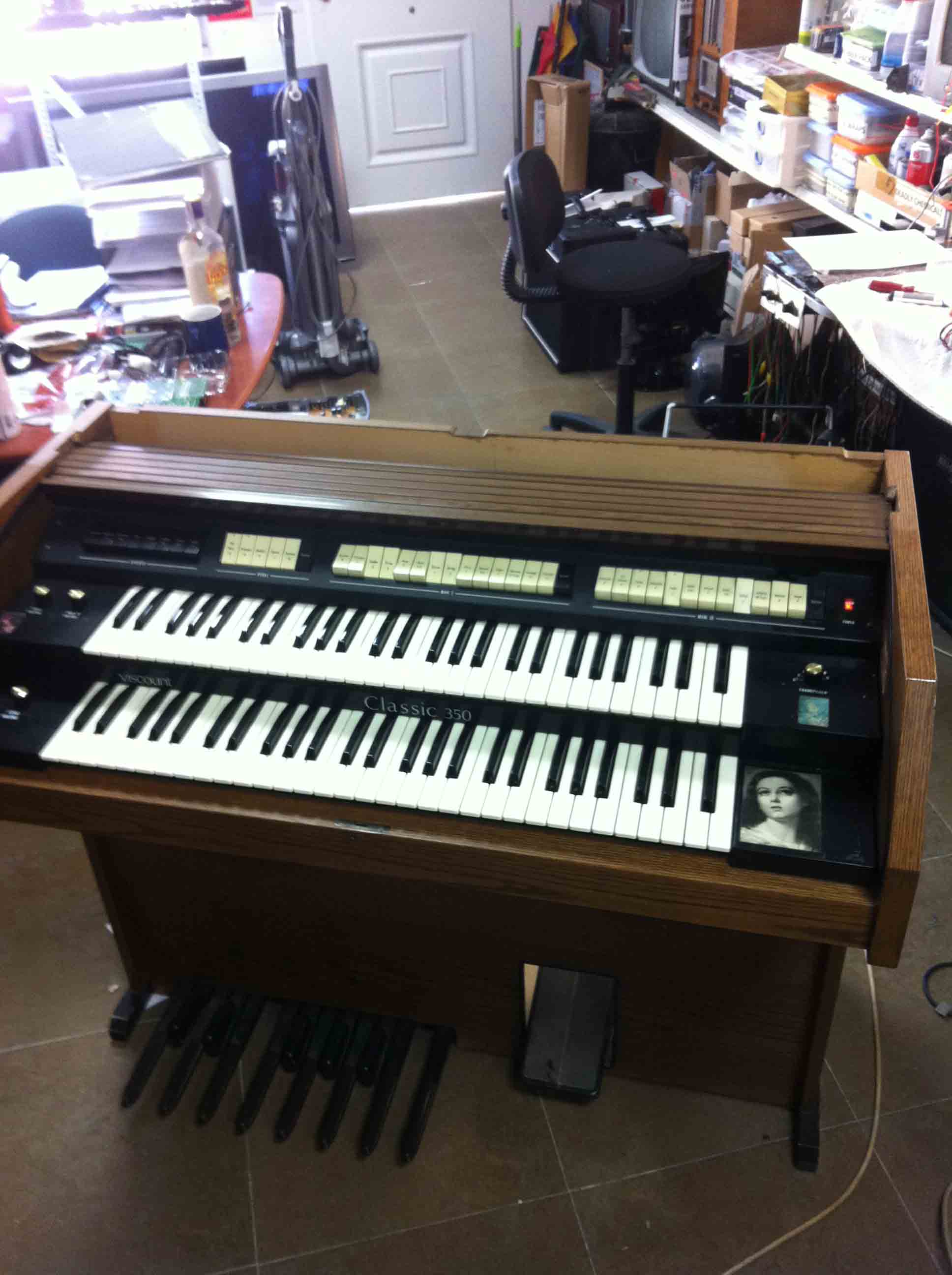
This elderly keyboard came in, she’s dating around late ‘70s. Owner said it was “just the power switch”. Whenever I hear things like this, you cannot help by replying, yeah right. Of course I was correct.
Power switch was broken, so that was replaced. No power. Looked at the main fuse on the rear panel, that was smashed and the fuse had tin foil around it. Here we go….
Fuse holder replaced, still no power getting to the main transformer. This time, one conductor in the power cable was open circuit and given the power plug was held on by sellotape, I replaced the whole cable.
We have power! There are 4 voices to choose from, which all sound equally horrible, so at least it’s consistent. Quite a bit of cleaning up was needed. All discrete components are used, with numerous CMOS devices of all kinds. Interconnecting cables are all strange push fit types and go open circuit as soon as you look at them. So, assembled it all and send it off.
Few days later, guess what? On the bench again. This time, power was on, but no audio and dim LEDs. A quick check of the power lines. +, – 12v all good, but +, -6V all over the place. Again, the 2 fuses on the power supply board had been replaced with ones rated for starting the QE2. The 4 leg 6V regulator was open circuit. Not having one in stock, I made a modification using a LM7805 giving 5V. I am sure nobody will miss the 1V. All running okay. Now we have to get the client to understand that the faults were unrelated. I am sure there will be tears before bedtime.
Este viejo teclado llegó, data de finales de los años 70. El dueño dijo que era “solo el interruptor de encendido”. Siempre que escucho cosas como esta, no puedo evitar responder, sí, claro. Por supuesto que tenía razón.
El interruptor de encendido estaba roto, así que lo reemplazaron. No había energía. Miré el fusible principal en el panel trasero, estaba roto y el fusible tenía papel de aluminio alrededor. Aquí vamos…
Se reemplazó el portafusibles, todavía no llegaba energía al transformador principal. Esta vez, un conductor en el cable de alimentación estaba en circuito abierto y, dado que el enchufe de alimentación estaba sujeto con cinta adhesiva, reemplacé todo el cable.
¡Tenemos energía! Hay 4 voces para elegir, que suenan igual de horribles, así que al menos es consistente. Fue necesario un poco de limpieza. Se utilizan todos los componentes discretos, con numerosos dispositivos CMOS de todo tipo. Los cables de interconexión son todos de tipo extraño de ajuste a presión y se abren en circuito tan pronto como los miras. Entonces, lo ensamblé todo y lo envié.
Unos días después, ¿adivinen qué? En el banco de trabajo nuevamente. Esta vez, la energía estaba encendida, pero no había audio y los LED estaban tenues. Una rápida revisión de las líneas eléctricas. +, – 12v todo bien, pero +, -6V por todos lados. Nuevamente, los 2 fusibles en la placa de la fuente de alimentación habían sido reemplazados por otros que estaban clasificados para arrancar el QE2. El regulador de 6V de 4 patas estaba en circuito abierto. Al no tener uno en stock, hice una modificación usando un LM7805 que daba 5V. Estoy seguro de que nadie extrañará el 1V. Todo funciona bien. Ahora tenemos que lograr que el cliente entienda que las fallas no estaban relacionadas. Estoy seguro de que habrá lágrimas antes de la hora de dormir.







